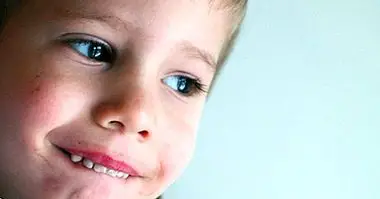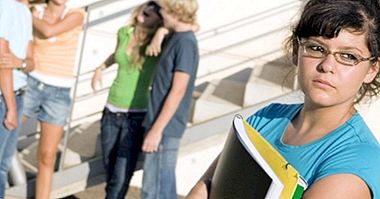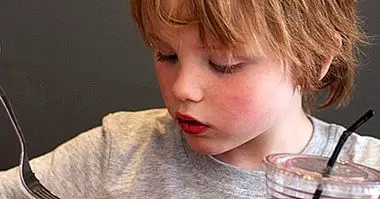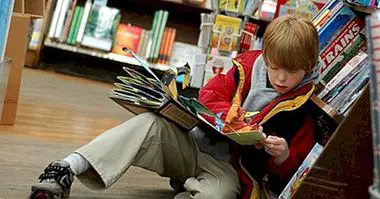The intervention in Psychomotor: what is this discipline?
Psychomotricity is the discipline that studies the relationship between the psyche and the motor ability of the human being
Born during the twentieth century by the hand of authors such as neurologist Ernest Dupré or psychologist Henry Wallon, let's see what this area of study really consists of and how interventions in the child population are made concrete. Also, we will review other concepts related to Psychomotricity, such as the fundamentals of motor development and the definition of what is known as "body schema".
- Related article: "Psychology of Development: main theories and authors"
Basic principles of Psychomotricity
The discipline of psychomotricity is based on theoretical premises on how to understand the different types of development in the human being. As to the perspective of psychological development , it is assumed that the subject is in continuous interaction with the environment in which it develops; on the point of view of motor development, it is affirmed that there is a relationship between the motor and psychological functions (cognitive, emotional, social) of each person; on the part of sensory development it is understood that there is a link between the senses and the integral maturation of the individual.
Another of the fundamental theoretical principles is based on recognizing that the correct construction of the body schema favors the development of psycho-cognitive abilities . In addition, it is validated that the body is the key aspect of contact with external reality, which is produced by the movement of that.
On the other hand, it is assumed as an inseparable element the motor behavior with respect to the behavior of the same individual, which interacts with the environment, enabling the development of complex capacities. Finally, a last fundamental idea would grant a decisive role of language in the process of psychic development of each subject.
- You may be interested: "The development of personality during childhood"
Determining factors in motor development
The motor development consists of a continuous process that begins already from the embryonic phase and that does not stop until the individual reaches maturity, adopting very different rhythms depending on each subject although following the same sequence in all the stages that compose it. One of the first samples that take place in it refers to the expression of innate reflexes that little by little disappear to later transform into voluntary and controlled movements of a different nature.
This is possible from the fact that the myelination process is carried out and is being completed and is being established in the layers of the cerebral cortex (which regulate these voluntary actions), so that each time the movement is refined and refined. in all its coordinated aspects.
Among the factors that determine motor development, three types can be distinguished: prenatal, perinatal and postnatal . Among the first, aspects such as characteristics and maternal habits (age, diet, presence of diseases, hereditary characteristics, etc.) that can negatively affect the fetus during pregnancy are relevant. At the time of delivery complications can occur during the extraction, which can lead to episodes of anoxia or brain injury (perinatal factors).
Regarding the postnatal factors, they are multiple, although it is mainly attended to: the level of physical and neurological maturation , the nature of the stimulation and experiences to which it is subjected, the type of food, the environment, the types of care and hygiene, the existence of affective behaviors by significant figures, etc. As mentioned above, physical development is very closely related to psychological, emotional, behavioral and social, with which the result obtained from the combination of all of them will be decisive for the child.
- Related article: "The 6 stages of childhood (physical and psychic development)"
What is meant by body schema?
The concept of body schema is defined as the knowledge that an individual possesses over his own body , which includes a full awareness of it both at rest and in movement, about the relationship between the set of elements that compose it and the connection of all this to the space or context that surrounds it (physical And social). In this way, both the emotional self-perception (mood or own attitudes) and the heteroperception that others maintain towards a subject are also relevant aspects in the configuration of the body schema.
As equivalent expressions or alternative forms of denominating the corporal scheme there are also binomials such as Body Image, Body Consciousness, Postural Scheme, Image of oneself or Image of the Body Self. Different authors such as Wallon, Le Boülch, Acaen and Ajuriaguerra or Frostig have made their own contributions to define the concept of body schema, although unanimously they all converge on the idea of the bideccional influence subject-environment (physical and social) and the individual's conscience of their own body.
One of the most relevant proposals is the one made by Bryan J. Cratty, whose classification of the determinant components of the body schema is novel and interesting to influence the influence of cognitive aspects in the configuration of that. So, for Cratty, the components of the Body Scheme would:
- Knowledge and recognition of the Body Plans.
- Knowledge and recognition of the Parts of the Body.
- Knowledge and recognition of the Body Movements.
- Knowledge and recognition of Laterality.
- Knowledge and recognition of Directional Movements.
Integrating learning
Regarding the development of the body scheme is assumed that it is as the child is incorporating the set of learning that will allow greater cognitive-affective-social competence of itself and the environment when the conformation of this body image occurs of itself differentiated from that of others and the context that surrounds it. That is why it is said that in the first years of life it is when the individual personality is structured and that from this point it makes possible the awareness of the self in space and time with respect to everything that is alien to it.
More specifically, the evolution of the formation of the body scheme begins in the first months of life at the level of reflex reactions, which are transforming in other types of more elaborate movements as the baby, in the second year of life, is exploring and knowing the environment. This is facilitated by their growing capacity for autonomous movement.
After three years and until the end of childhood changes occur at the cognitive level so that the child is substituting the subjectivity of the understanding of the outside world for a more elaborate analytical-rational capacity. Finally, approximately 12 years is when the establishment and awareness of the body scheme is completed.
- You may be interested: "How does emotional development occur in childhood?"
Psychomotor skills in the stage of Early Childhood Education
In the most recent decades the Spanish educational system has been incorporating as relevant some contents of disciplines that had traditionally gone unnoticed (or simply had not been investigated about them yet), as is the case of Psychomotricity.
Even so, there is still a long way to go to achieve this interest in a universal way in all current areas and society. This is due to the fact that the historically established idea that the only learning that is relevant to teach is instrumental or productive, overlooking that these are often influenced by others more expressive.
Thus, the deficit in areas such as the perceptive, cognitive, emotional organization, etc., that allow a psychological balance and an adequate capacity to adapt to the changing environment, can lead to a result of school failure if it is not corrected in time. In the specific case of Psychomotricity, there are investigations that relate the existence of manifest learning difficulties such as dyslexia, dysgraphia, expressive language disorders or arithmetic calculus that are derived from problematic sensory integration or deficits in the perceptual visual or auditory organization (and body, indirectly) of the individual.
More globally, the conformation of personality and intelligence they also start from an adequate structuring of the "I" differentiated from the "external world", which requires a correct assimilation of contents related to the psychomotor skills that make it possible. This is also comparable to the achievement of a satisfactory psychophysiological development, since the coordination and successful execution of the physical movements of an individual is one of the purposes that are worked on in Psychomotricity.
The importance of global development in children
For all the above, and by way of summary, it could be said that the need to teach Psychomotor content in the early childhood education stage lies in the facilitation in the scope of a global and integral development of the child (physical-motor co-ordination-, affective, social, intellectual), in the establishment of one's own identity, in the promotion of self-awareness of oneself, in favoring the acquisition of school learning and in the attainment of satisfactory social relations (increased linguistic competence), in the acquisition of a sufficient competence of autonomy, self-efficacy, self-concept, etc., and in the development of affective and emotional capacities.
Bibliographic references:
- Lázaro, A. (2010). New experiences in psychomotor education (2nd Edition Revised and extended). Ed. Miras: Zaragoza.
- Llorca Llinares, M. (2002). An educational proposal through the body and movement. Ed Aljibe: Málaga.



















